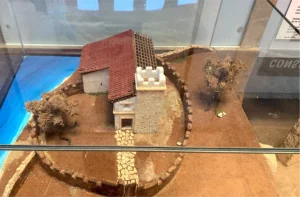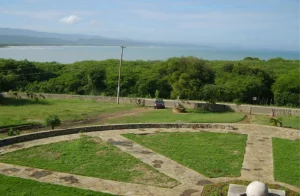
La Hispaniola National Park, in addition to the natural environments that preserve the essence of nature present in that epic and that is described in the diaries of Don Cristóbal Colón and Historians of the Indies that accompany him, is essentially a very interesting place.
La Hispaniola National Park was created by Decree 571-09 in its article No. 5. It has an area of 54.83 km2 (5,483 ha). It is located in the municipal district of La Isabela Histórica, belonging to the Luperón municipality, and borders the Villa Isabela municipality. Within the area is the Historic Park of La Isabela, which recreates the first city of the new world. It is the second largest protected area in the Puerto Plata province.
According to the Presidential Decree that creates the park, the objective is to conserve the enormous cultural heritage of the La Isabela historical site, represented in the archaeological sites, the Admiral’s house, the sinkholes and ceremonial plazas, as well as the natural environments that preserve the essence of the nature present in that epic of discovery.

And that is described in the diaries of Don Cristóbal Colón and the historians of the Indies who accompanied him: the La Isabela bay, the mangroves and wetlands at the mouth of the Bajabonico River, the La Culebra stream and its tributaries, the cliffs and marine platforms, caves, aboriginal crop sites, combed vegetation and the coastline of Cape Isabela, the northernmost of the island of Hispaniola.
The park preserves enormous coral reefs, which emerge from an area that was historically coastal, and inside there are important caves that shelter samples of Taino art and culture.
On the cliffs you can see impressive views where the combination of the dry forest and the blue of the Atlantic Ocean will make it a spectacular landscape. In the area, the biodiversity related to the dry forest, the coastal coastline and the mouth of the Bajabonico River with its tributaries into the Atlantic Ocean are protected. This river is the longest in the province of Puerto Plata.
The conservation zone protects the vestiges of the meeting between the Taino culture and the European, when at the end of 1493 the first European settlement was founded, the first mass was celebrated and the first town hall of America was installed.

The area corresponds to subtropical dry forest; the most notorious of the flora are the great extensions of aromas (Acacia Guayacán emblematic tree (Guaiacum officinale) in the La Isabela Historical Park. Author: Roberto Luis Gómez. Protected Natural Areas of the province of Puerto Plata La Hispaniola National Park of crafts , viewpoint and others.
Its beaches, Punta de Devora, del Muelle and Brivala, are enabled and offer an excellent offer to make this an unforgettable visit. In addition, the area has an Information Center, trails, caves, viewpoint and other spaces enabled within the protected area.
How to get? From the city of Puerto Plata, take the Puerto Plata – Imbert highway, arriving at the Imbert intersection, turn towards the municipality of Luperón; Once in the town of Luperón, take the road to the Castillo de la Isabela and from there follow the signs. From Santo Domingo, take the Duarte highway, turn in Navarrete towards Puerto Plata, at the Imbert crossroads follow the same instructions as in the previous case.
To learn more about other important and interesting places in Puerto Plata, follow us at holidayspuertoplata.com
How to get to La Hispaniola National Park: CLICK HERE!

